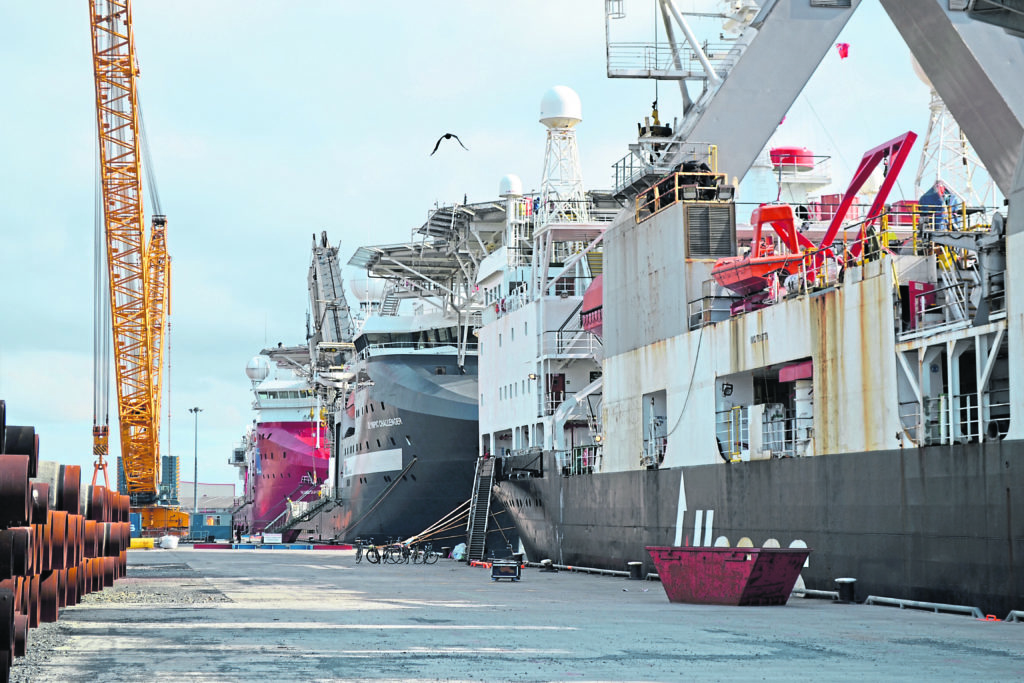
Growing confidence in the Atlantic Frontier is generating a ‘gravity-shift’ towards a Shetland supply chain willing and able to capitalise on its geographical advantages.
The surge of activity west of Shetland has given the oil and gas sector a long overdue boost and a desire to invest in what could be a 30-year opportunity.
For the Atlantic Frontier, geography plays an increasingly important role and Shetland, with its unique location, facilities and supply chain, is coming to the fore.
Last autumn the Oil and Gas Authority, along with Highlands and Islands Enterprise, Lerwick Port Authority and Shetland Islands Council, hosted an industry showcase in Shetland to highlight the islands’ capability and ‘can do’ approach to business.
“People are surprised at the capabilities and depth of experience that they can rely on here in Shetland,” explains Alan Balfour, director at Peterson, one of the major supply chain businesses on the islands.
“Yet many of the firms on Shetland have been involved in the oil and gas sector for more than 40 years – and because we are a relatively small community, co-operation and collaboration are part of our DNA. This means we are able to adapt rapidly and take on new approaches.”
Alan believes this is increasingly relevant given the greater number of independents now active west of Shetland.
“With a growing number of operators in the region there is a desire for more collaboration with the supply chain to maximise economic recovery of assets. This is where we can help with our close geography and ability to react to demand.
“Good software and systems mean we can hold vital inventory items in stock, whilst around 50% to 60% of an offshore operator’s supplies comprise standard items such as food, provisions and fuel – and these can be supplied by Shetland direct,” Alan says.
Peterson is now working closely with others to develop a ‘pooling system’ already successfully operating in the southern and central North Sea – giving operators west of Shetland the chance to share supply vessels in what has been described as the ‘milk run’.
“New technology such as quayside hand-helds and on-line manifests means we can maximise every square inch on a vessel and offer end users a real time view of where their equipment is at any given moment,” Alan explains.
“This keeps costs down and also opens up the supply chain to smaller, local firms who could never previously access customers offshore,” Alan says.
At the same time, Lerwick boasts that it’s ‘the port that never closes’.
It has one of the country’s most sheltered anchorages able to offer a heavy-lift deep-water quayside 365 days a year, with significant laydown, purpose-built for the oil and gas sector.
Moving personnel is vital too, and Scalloway harbour on the island’s west coast is well suited to crew transfers, while Sumburgh airport has direct flights to Aberdeen and the central belt – offering new options for the future.
Other Highland ports and facilities have a role to play, too, says Gavin MacKay, head of energy industries at HIE.
“Across the industry we are seeing a gravity shift in how the supply chain is gearing up for the Atlantic Frontier. In logistics, every node adds cost and that cost is appropriate where it delivers value.
“I believe Shetland has a really strong hand to play in delivering value and this is supported by other facilities across the Highlands and Islands.
“Scrabster Harbour is our most northern mainland port and saw 100 oil and gas vessels last year. It’s well connected to the road and rail network and has a skilled supply chain, whilst on the west coast the sheltered deep water of Kishorn Port is hosting the world’s largest harsh-environment semi-sub drilling rig for
preparatory works ahead of its first North Sea project
“These are exciting times for the oil and gas sector and we are working closely with the industry, industry bodies, local authorities and the OGA to ensure we offer the skills and the infrastructure to maximise recovery west of Shetland in the most effective way,” Gavin said.